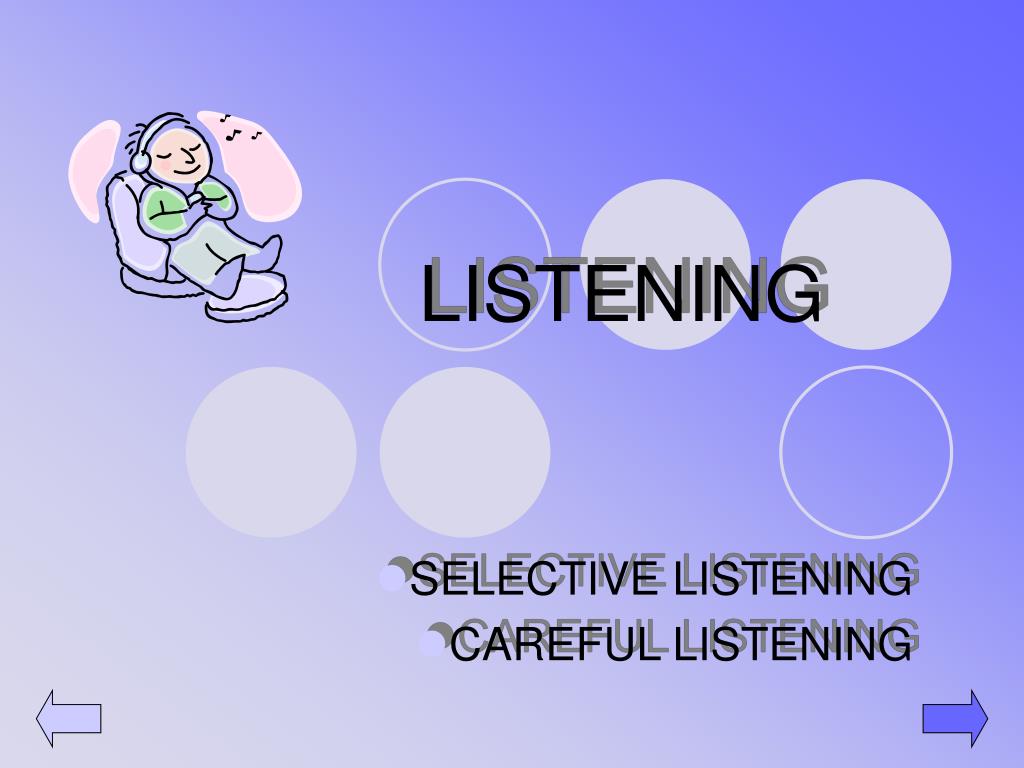


However, silence can also indicate the fear of continuing to talk. The client is then given the time to 'dig up' information and process information. It is also important at this stage that the counselor uses silence. The response from the counselor is in line with the client's story. In addition, the counselor tries to encourage the client, among other things by giving short verbal responses, such as 'like that' and by asking specific questions. The counselor does not try to steer the client, but tries to stick to the client's storyline. Gestures that encourage the client such as encouraging nods are also desirable.Ī verbal way to pay attention is to follow what the client has to say. A relaxed body posture is the best posture. Finally, the body language plays a significant role. Excessive eye contact could lead to a feeling of discomfort.
#Selective listening professional#
Lack of eye contact by the health care professional could indicate that they are not involved. Eye contact also plays a very important role. As a result, he may lose his attention and the client may think that he is not being taken seriously. He must be careful that he does not do this too much. The rescuer can choose to manipulate his facial expression. Different facial expressions have different meanings at different times. For example, a smile can express interest and a sense of consent while a frown will express antipathy and disapproval. The facial expression is one of the most important forms of non-verbal behavior. This behavior has a lot of influence on communication between people. In addition to listening, non-verbal behavior is another important aspect. The caregiver must also keep his attention focused on his profession. One has to listen carefully, but not lose sight of the role of caregiver. One must show interest without interrupting too much. Which 'non'-selective listening skills are important?īeing able to listen to someone properly is a profession in itself. If both parties know what they can expect, an initial contract can be made.

Some practical issues will also have to be discussed in the beginning such as the costs and duration of the calls. Because of the structure that the counselor introduces in the beginning, the client will also get more clarity. If the client does not agree with the proposals, a different way of working must be implemented. If the client agrees with these proposals, then both can start using them. However, if the client is not particularly confused, the counselor can explain how he works and can make some suggestions. The caregiver cannot do this if the client is completely confused. The counselor must explain what his way of working is. How does the social worker start?įirst of all, the counselor must make clear what the usual course of events is, so that the client knows what to expect. These skills coincide with the phases of problem clarification, problem nuance and problem handling. Regulatory skills relate to opening of the conversation, formulation of goals, making agreements about goals, clarifying situation and concluding the conversation.

Selective listening means asking questions, reproducing the information given in one's own words, stimulating precise answers and summarizing. The 'non'-selective skills include non-verbal behavior, careful following of the conversation and the use of moments of silence. The listening skills can be divided into non-selective (actually impossible not to perform) and selective.


 0 kommentar(er)
0 kommentar(er)
